Ramanathaswamy Temple Has Spectacular Corridors With Over 4000 Pillars
A. Sutherland - AncientPages.com - Ramanathaswamy Temple (or Rameshwaram Temple) is a famous Hindu shrine dedicated to the god Shiva and situated on the island of Rameshwaram, in the state of Tamil Nadu, India.
 Image credit: Vinayaraj - CC BY-SA 3.0
Image credit: Vinayaraj - CC BY-SA 3.0
One of the most important temples in India, the Rameshwaram Temple, is also one of the twelve Jyotirlinga temples, which symbolize the infinite nature of Lord Shiva. This religious landmark - associated with the history of the Ramayana period - is one of the country's oldest and most popular pilgrimage centers.
Another interesting fact is that Rameshwaram is the only south Indian Shiva Temple of the four Dhams (sacred pilgrimage places). The others are Dwarka in the west, Badrinath in the north, and Puri in the east of the country.
The temple's primary deity is Ramanathaswamy (Shiva) in the form of a lingam, the sacred object that symbolizes the god Shiva and is revered as an emblem of generative power.
Delivery Of Lingam To Worship Lord Shiva
Ramayana says that Rama, who is the seventh avatar of the god Vishnu, prayed to the god Shiva to absolve him of the sin of killing a Brahmin (son of a Vedic Rishi) committed during the war against the Rakshasa king Ravana.
In Hindu beliefs, the Rakshasas were a terrible danger to all living creatures, and especially to their enemies. As master magicians, the Rakshasa warriors were equipped with psychic and magical abilities, additionally fueled by divine and powerful energy known as kundalini.
Rameswaram Temple's corridor. image source
Their greatest Rakshasa - Ravana, will also someday return because as Ravana foretold before his last battle, he would be reborn one more time into the world.
Rama wanted to have a large lingam to worship Shiva, so he sent Hanuman, the lieutenant in his army, to bring a lingam from the Himalaya Mountains. He did it but was delayed in delivering the lingam, so Rama built a small lingam out of the sand available in the seashore, which is believed to be the lingam in the sanctum.
So, in the Sri Ramanathaswamy Temple, there are two lingams inside the sanctum. Rama instructed that the Vishwalingam should be worshipped first since it was brought by Hanuman. The worshipers continue this tradition even today.
The Temple's Spectacular Corridors
The present Ramanathaswamy Temple, built by Pandya Dynasty during the 12th century, has long corridors in its interior, running between massive colonnades on platforms more than five feet high.
There are three huge corridors, of which the first one is the oldest and dates back to the 12th century, but has been renovated over various time periods and houses the main deity.
The second corridor has 108 shiva lingas as well as a statue of Ganapathi. The third corridor is something extraordinary as it has 1212 pillars set on an elevated platform.
These spaces - the world's longest corridors with a height of 6.9 meters - have more than 4000 pillars, are 4000 feet (1219 m) long (total of all four corridors). They are running between huge arcades on five feet high platforms. The total length of these corridors is thus 3850 feet.
One of them is known as the Corridor of 1000 Pillars.
The North and South corridors are the longest and flanked on each side with numerous pillars, beautifully decorated by artisans and master architects. The long corridors were built during the 18th century. The second corridor has sandstone pillars, beams, and a ceiling.
The junction of the third corridor on the west and the paved way leading from the western gopuram to the Setumadhava shrine forms a unique structure in the form of a chessboard, popularly known as Chokkattan Mandapam.
The temple's 22 theerthams (tanks) are still important for devotees, who used them for bathing to purify their souls before they start worshipping inside the temple. It is worth mentioning that the presiding deity of the temple - the Lingam of Ramanathaswamy (Shiva) - was established and worshiped by Rama before crossing his bridge to Lanka.
Written by – A. Sutherland - AncientPages.com Senior Staff Writer
Copyright © AncientPages.com All rights reserved. This material may not be published, broadcast, rewritten or redistributed in whole or part without the express written permission of AncientPages.com
Expand for referencesMore From Ancient Pages
-
 Norsuntepe – Little-Known Mysterious Prehistoric Site In Anatolia, Turkey: Why Was It Abandoned And Destroyed By Fire?
Civilizations | Mar 13, 2014
Norsuntepe – Little-Known Mysterious Prehistoric Site In Anatolia, Turkey: Why Was It Abandoned And Destroyed By Fire?
Civilizations | Mar 13, 2014 -
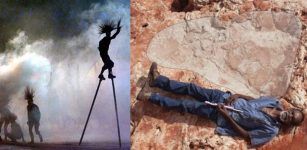 Aboriginal Creation Story Of Marala Was True – World’s Largest Dinosaur Footprints Confirm Ancient Creation Myth
Archaeology | Mar 29, 2017
Aboriginal Creation Story Of Marala Was True – World’s Largest Dinosaur Footprints Confirm Ancient Creation Myth
Archaeology | Mar 29, 2017 -
 Could Shipworms Be Destroying The Wreck Of Captain Cook’s Endeavour?
Archaeology | Aug 18, 2022
Could Shipworms Be Destroying The Wreck Of Captain Cook’s Endeavour?
Archaeology | Aug 18, 2022 -
 Resourceful Pre-Hispanic Society In Bolivia Had Flourishing Agriculture Despite Harsh Environment Of The Andes
Archaeology | Dec 24, 2017
Resourceful Pre-Hispanic Society In Bolivia Had Flourishing Agriculture Despite Harsh Environment Of The Andes
Archaeology | Dec 24, 2017 -
 Nebiri, a ‘Chief of Stables’ – oldest case of heart disease in 3,500-year-old mummy
News | Aug 28, 2015
Nebiri, a ‘Chief of Stables’ – oldest case of heart disease in 3,500-year-old mummy
News | Aug 28, 2015 -
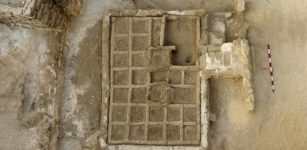 4,000-Year-Old Funerary Garden Found In Luxor, Egypt
Archaeology | May 9, 2017
4,000-Year-Old Funerary Garden Found In Luxor, Egypt
Archaeology | May 9, 2017 -
 Ancient City Of Sogmatar And Recent Discovery Of 5,000-Year-Old Children’s Toy
Archaeology | Oct 6, 2017
Ancient City Of Sogmatar And Recent Discovery Of 5,000-Year-Old Children’s Toy
Archaeology | Oct 6, 2017 -
 Michelangelo’s Hidden Secrets Under The Medici Chapel
Featured Stories | Jul 16, 2019
Michelangelo’s Hidden Secrets Under The Medici Chapel
Featured Stories | Jul 16, 2019 -
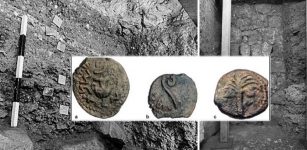 New Discovery: 2,000-Year-Old Monumental Street In Jerusalem Built By Pontius Pilate
Archaeology | Oct 21, 2019
New Discovery: 2,000-Year-Old Monumental Street In Jerusalem Built By Pontius Pilate
Archaeology | Oct 21, 2019 -
 What Was Humor Like In The 13th Century?
Featured Stories | Jun 22, 2018
What Was Humor Like In The 13th Century?
Featured Stories | Jun 22, 2018 -
 Ancient Burials Of World’s First Horse Riders Found Near The Black Sea
Archaeology | Mar 3, 2023
Ancient Burials Of World’s First Horse Riders Found Near The Black Sea
Archaeology | Mar 3, 2023 -
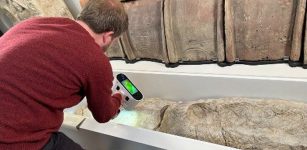 3D Scans Used To Study Mysterious Roman Burial Practice
Archaeology | Jun 5, 2023
3D Scans Used To Study Mysterious Roman Burial Practice
Archaeology | Jun 5, 2023 -
 Few Witches Were Executed In Wales In The Middle Ages – Why?
Featured Stories | Oct 29, 2024
Few Witches Were Executed In Wales In The Middle Ages – Why?
Featured Stories | Oct 29, 2024 -
 Hill Of 100,000 Crosses In Lithuania Survived Against All Odds
Featured Stories | May 23, 2017
Hill Of 100,000 Crosses In Lithuania Survived Against All Odds
Featured Stories | May 23, 2017 -
 Vast Network Of Previously Unknown European Bronze Age Megastructures Discovered
Archaeology | Nov 20, 2023
Vast Network Of Previously Unknown European Bronze Age Megastructures Discovered
Archaeology | Nov 20, 2023 -
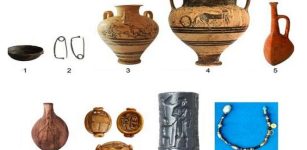 Cyprus’s Copper Deposits Created One Of The Most Important Trade Hubs Of The Bronze Age
Archaeology | Mar 17, 2023
Cyprus’s Copper Deposits Created One Of The Most Important Trade Hubs Of The Bronze Age
Archaeology | Mar 17, 2023 -
 Six Ancient Giant Stone Spheres Recovered From The Diquís Delta, Costa Rica
Archaeology | Apr 7, 2022
Six Ancient Giant Stone Spheres Recovered From The Diquís Delta, Costa Rica
Archaeology | Apr 7, 2022 -
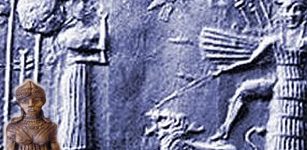 Ereshkigal – Ruler Of The Sumerian Underworld And Most Feared Deity In Mesopotamian Pantheon
Featured Stories | Mar 16, 2017
Ereshkigal – Ruler Of The Sumerian Underworld And Most Feared Deity In Mesopotamian Pantheon
Featured Stories | Mar 16, 2017 -
 Unexpected Historical Discovery: Remains Of Famous Sami Woman Recovered
Archaeology | Aug 22, 2022
Unexpected Historical Discovery: Remains Of Famous Sami Woman Recovered
Archaeology | Aug 22, 2022 -
 Hidden Details In Ancient Egyptian Tomb Paintings Revealed By Chemical Imaging
Featured Stories | Jul 28, 2023
Hidden Details In Ancient Egyptian Tomb Paintings Revealed By Chemical Imaging
Featured Stories | Jul 28, 2023


